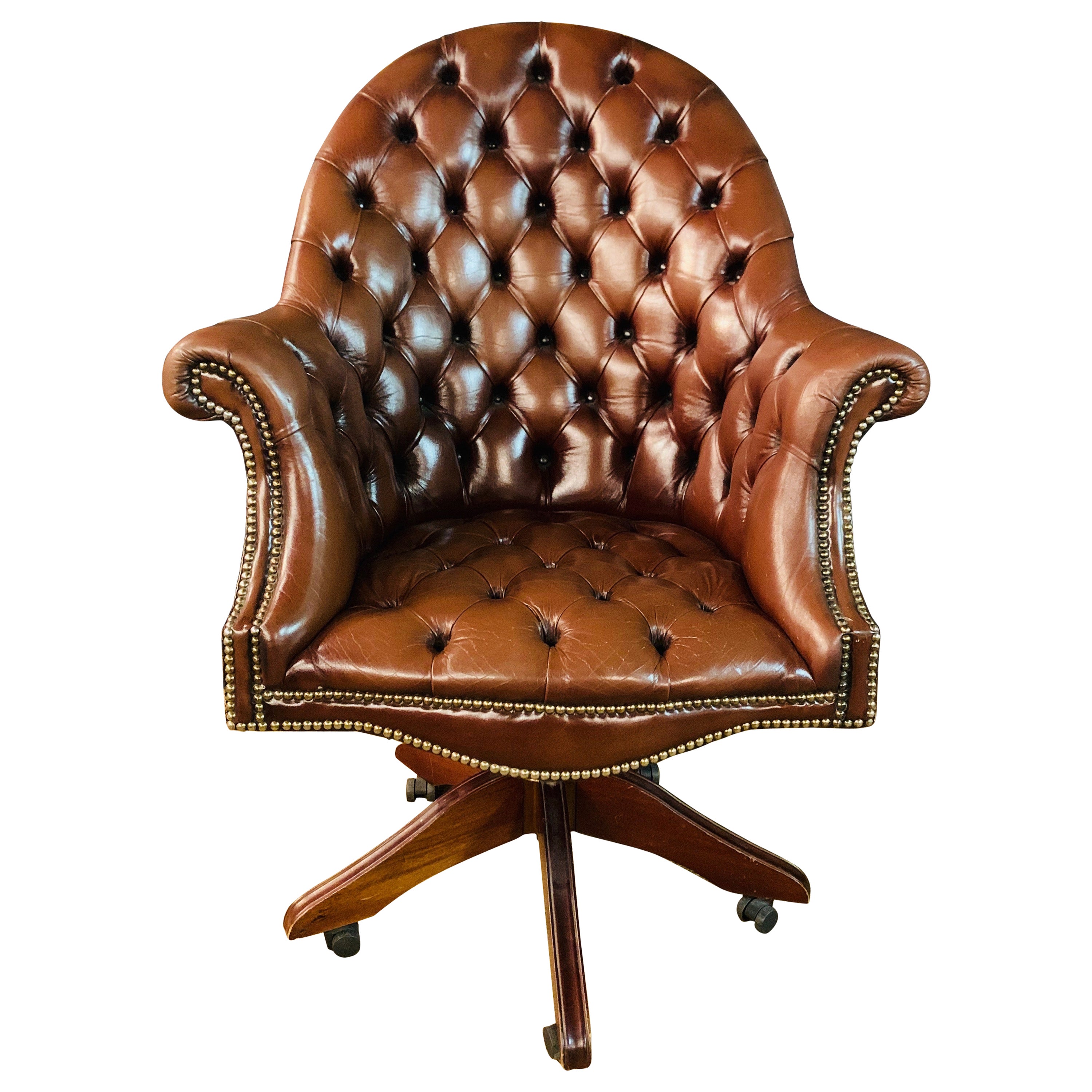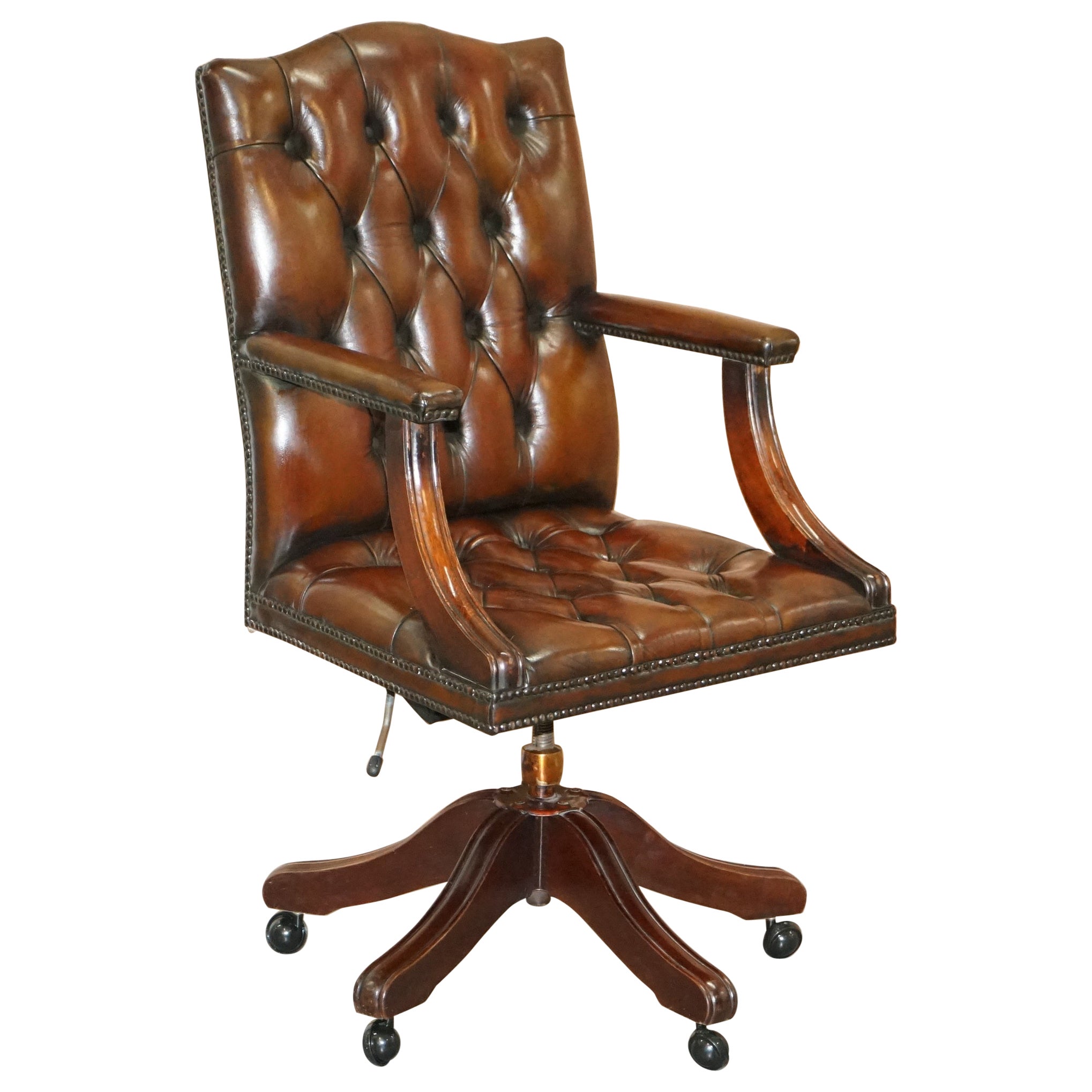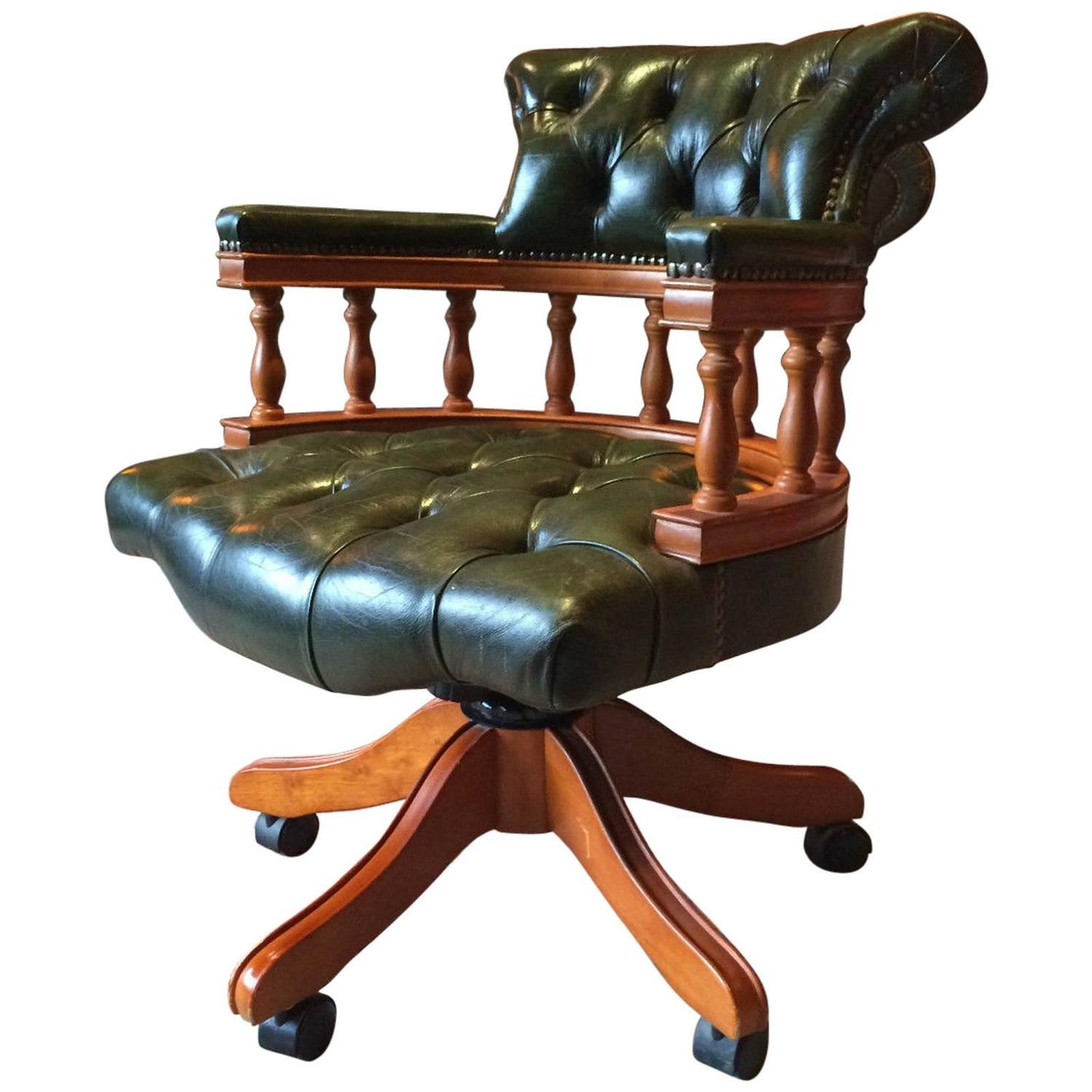Historical Context of Chesterfield Desk and Chair Sets

Chesterfield desk and chair sets, while often associated with a specific aesthetic, represent a culmination of evolving design trends spanning several centuries. Their elegant form and luxurious materials reflect a rich history intertwined with changing tastes and technological advancements in furniture making. Understanding this historical context reveals the enduring appeal of these iconic pieces.
Chesterfield desk and chair – The design’s origins are not definitively tied to a single moment or creator, unlike some other named furniture styles. However, the characteristic features—deep button tufting, rolled arms, and a generally plush, curved silhouette—emerged gradually over time, influenced by various styles including the earlier Queen Anne and Georgian periods. The rise of the Chesterfield style in the 18th century coincided with a growing appreciation for comfort and opulent design among the upper classes. The deep buttoning, initially a functional method for securing upholstery, became a prominent aesthetic element, contributing to the style’s distinct visual identity.
Key Design Features of Chesterfield Desks and Chairs
Chesterfield desks and chairs are characterized by several key design features that distinguish them from other furniture styles. The most prominent is the deep button tufting on the upholstery, creating a distinctive diamond pattern. Rolled arms, typically curved and padded, are another defining characteristic, offering comfortable support. The low seat height and overall low-slung profile contribute to the furniture’s elegant and stately appearance. The use of high-quality leather upholstery, often in rich colors like burgundy or deep brown, is also a common feature, though modern interpretations may incorporate other luxurious fabrics. Finally, the overall form is typically curved and rounded, avoiding sharp angles or straight lines. These features combine to create a cohesive and recognizable aesthetic.
Influence of Chesterfield Design on Modern Furniture
While the classic Chesterfield design remains popular, its influence extends to contemporary furniture design. Modern interpretations often retain the deep button tufting and rolled arms but incorporate updated materials and colors. For example, contemporary Chesterfield-inspired pieces may utilize modern fabrics such as velvet or linen, or feature bolder color palettes. The iconic silhouette and curved lines continue to inspire furniture designers, appearing in updated forms such as smaller-scale desks or more streamlined chairs. The essence of the Chesterfield aesthetic—comfort, luxury, and a sense of classic elegance—remains highly sought after.
Comparison of Chesterfield, Victorian, and Queen Anne Furniture Styles
The Chesterfield style, while sharing some characteristics with earlier periods, has a unique identity. The following table compares Chesterfield sets with Victorian and Queen Anne styles, highlighting their differences in materials, ornamentation, and overall style.
| Style | Materials | Ornamentation | Overall Style |
|---|---|---|---|
| Chesterfield | High-quality leather (traditionally), wood (typically mahogany or walnut), often featuring brass nailhead trim. | Deep button tufting, rolled arms, low-slung profile, minimal ornamentation beyond the upholstery. | Elegant, comfortable, and luxurious; emphasizes curves and soft lines. |
| Victorian | A wide variety of materials, including hardwoods, ebony, rosewood, marble, and various upholstery fabrics. | Intricate carvings, inlaid woods, heavy gilding, and often features a more ornate and decorative style. | Ornate, opulent, and often features a highly decorative aesthetic; reflects a variety of influences. |
| Queen Anne | Typically uses walnut or mahogany wood; upholstery fabrics were often simpler than later periods. | Cabrio legs, often featuring shell or scroll motifs; less ornamentation compared to later styles. | Elegant but more restrained than later styles; characterized by graceful curves and a sense of balance. |
Materials and Craftsmanship in Chesterfield Desk and Chair Production

Chesterfield desk and chair sets are renowned for their luxurious materials and meticulous craftsmanship. The combination of high-quality wood, fine leather, and skilled handwork contributes significantly to their enduring appeal and high value. Understanding the materials and processes involved provides insight into the distinction between antique pieces and modern reproductions.
Wood Selection and Preparation
The choice of wood significantly influences the desk and chair’s overall aesthetic and structural integrity. Historically, hardwoods such as mahogany, walnut, and cherry were favored for their rich color, durability, and ability to hold intricate carvings. Mahogany, with its reddish-brown hues and fine grain, was particularly popular for its elegant appearance and resistance to warping. Walnut, known for its deep brown tones and beautiful figure, offered a more dramatic and sophisticated look. Cherry, while lighter in color, possesses a warm tone and ages gracefully, developing a rich patina over time. Modern reproductions may utilize other hardwoods or engineered wood products, which can impact the overall quality and longevity of the piece. The wood undergoes careful selection, drying, and preparation processes to minimize warping and cracking during the manufacturing process. Joints are typically crafted using traditional methods, such as mortise and tenon, to ensure strength and stability.
Leather Selection and its Impact, Chesterfield desk and chair
The leather used in Chesterfield furniture plays a crucial role in its aesthetic and durability. High-quality leather, often full-grain or top-grain, is preferred for its superior texture, suppleness, and resistance to wear. Full-grain leather retains the natural grain of the hide, resulting in a unique and richly textured surface. Top-grain leather, while slightly less expensive, is still durable and offers a smooth, consistent appearance. The leather’s color and finish can significantly impact the overall look of the piece, ranging from deep, rich browns and blacks to lighter, more contemporary shades. The choice of leather also affects the furniture’s longevity; higher-quality leather will age gracefully and develop a beautiful patina over time, while lower-quality leather may show signs of wear and tear more quickly.
Upholstery and Nail Head Trim
The upholstery process for a Chesterfield chair is intricate and labor-intensive. The leather is carefully cut and shaped to fit the chair’s frame, paying close attention to the characteristic deep button tufting. This tufting, created by strategically placing buttons through the leather and securing them to the underlying padding, gives the chair its signature look and provides a comfortable, supportive seat. The leather is then carefully stretched and tacked onto the frame, ensuring a smooth, wrinkle-free finish. The nail head trim, typically made of brass or other metals, is applied along the edges of the chair’s arms, base, and back. This trim serves both a decorative and functional purpose, holding the leather in place and adding a final touch of elegance. The precision and skill required in this process contribute to the high value of authentic Chesterfield furniture.
Antique vs. Modern Chesterfield Craftsmanship
The craftsmanship of antique Chesterfield sets differs significantly from that of modern reproductions. A comparison reveals key distinctions in quality and construction:
- Wood Quality and Joinery: Antique sets often utilize superior quality hardwoods with intricate joinery techniques, resulting in robust and durable pieces. Modern reproductions may use less expensive wood or simpler joinery methods.
- Leather Quality and Treatment: Antique pieces typically feature full-grain leather that has aged gracefully, developing a unique patina. Modern reproductions may use lower-grade leather or artificial leather alternatives.
- Upholstery Techniques: Antique upholstery demonstrates meticulous hand-stitching and careful leather placement. Modern reproductions often utilize machine stitching and less precise leather fitting.
- Nail Head Trim: Antique nail head trim is usually of higher quality materials and evenly spaced, showcasing craftsmanship. Modern reproductions may have less refined trim.
- Overall Construction: Antique Chesterfield sets often display a higher level of overall construction quality, reflecting the dedication to detail and craftsmanship of the era. Modern reproductions may prioritize speed and cost-effectiveness, resulting in a less refined finished product.
Contemporary Applications and Interpretations of Chesterfield Desk and Chair Design

The enduring appeal of Chesterfield furniture, characterized by its deep buttoning, rolled arms, and elegant silhouette, extends far beyond its historical context. Modern designers and homeowners continue to find inspiration in its classic form, adapting it to contemporary aesthetics and functional needs. This section explores the diverse ways Chesterfield design principles are reinterpreted in modern settings, demonstrating its continued relevance in both residential and commercial spaces.
Modern Chesterfield Desk and Chair Set Variations
Three distinct variations of a modern Chesterfield desk and chair set can highlight the versatility of this design. The first variation embraces a minimalist aesthetic, utilizing sleek, dark stained walnut wood for the desk and chair frame. The deep buttoning is retained, but executed in a subtly textured, charcoal grey fabric, offering a contemporary twist on the classic design. The overall effect is sophisticated and restrained, ideal for a modern executive office. The second variation prioritizes a luxurious feel, using polished brass accents on a richly lacquered mahogany desk. The chair is upholstered in a plush, emerald green velvet, emphasizing the opulent character of the design. This version is suited for a home office that values elegance and comfort. Finally, a third variation takes a bolder approach, employing a vibrant turquoise leather for the chair and a white high-gloss desk made from acrylic. The deep buttoning is still present, but the color contrast creates a striking, modern statement. This design is best suited for a contemporary workspace seeking a pop of color and a sense of playful sophistication.
Chesterfield Design Elements in Contemporary Office Spaces
Chesterfield design elements are frequently incorporated into contemporary office spaces to inject a touch of classic elegance and sophistication. For example, a Chesterfield-style sofa might be used in a reception area to create a welcoming and upscale atmosphere. The deep buttoning and rolled arms of a Chesterfield armchair can be found in executive offices, providing a comfortable and stylish seating option. Even subtle design cues, such as the use of tufted upholstery or rolled armrests on other furniture pieces, can evoke the spirit of Chesterfield design without directly replicating the entire style. These strategic applications create a sense of refined luxury while maintaining a modern aesthetic.
The Appeal of Chesterfield Furniture in Modern Homes and Workplaces
The enduring appeal of Chesterfield furniture in modern homes and workplaces stems from a combination of factors. Its timeless elegance transcends fleeting trends, making it a worthwhile investment that will remain stylish for years to come. The deep buttoning and plush upholstery provide exceptional comfort, making it ideal for prolonged periods of sitting. Furthermore, Chesterfield furniture possesses a certain gravitas and sophistication that elevates any space, conveying a sense of quality and refinement. In a home office, it can create a feeling of calm and focus; in a commercial setting, it projects an image of professionalism and success. The adaptability of the design also contributes to its popularity; it can be easily integrated into a variety of interior design styles, from traditional to contemporary.
Rewritten Article on Chesterfield Furniture
[Insert rewritten article text here. This section requires the original article text to be provided for rewriting. The rewritten text should focus on clear, concise prose and omit any references to AI tools.]
